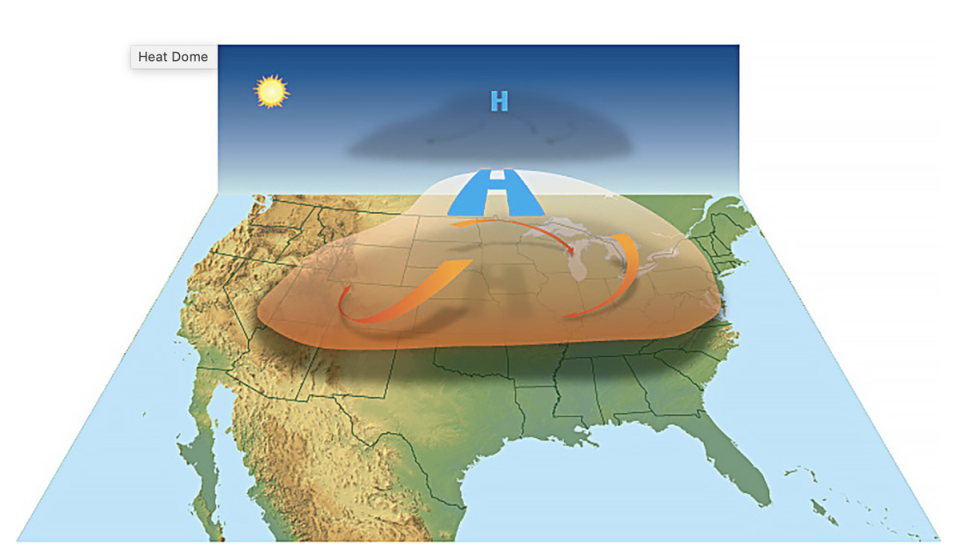What is a ‘heat dome’? The extreme events explained
An intense heatwave threatens to hit the southwest US this week, with temperatures in Phoenix and Las Vegas forecasted to rise well above 100 degrees Fahrenheit (38 degrees Celsius).
A meteorologist with the US National Weather Service told CNN that these extreme temperatures can be attributed to a “heat dome”.
As the name suggests, a heat dome occurs when high pressure traps concentrations of hot air over an area and blocks other weather systems from moving in, leading to sweltering conditions.
Heat dome conditions are what led to last year’s brutal heatwave in the Pacific Northwest, which killed hundreds of people in the US and Canada, breaking local temperature records across the region and starting a series of wildfires.
The climate crisis, driven largely by decades of burning fossil fuels, contributed to the red-hot heat and made it more intense, scientists say.
The 2021 Pacific Northwest heatwave would have been “virtually impossible” without the climate crisis, concluded World Weather Attribution, a group of climate scientists who measure the impact of human-caused warming on weather events.

At the time, politicians in affected areas reflected on the climate crisis.
Canadian prime minister Justin Trudeau warned that such events could become the norm unless more is done to avert rising global temperatures.
“We’ve been seeing more and more of this type of extreme weather event in the past years. So realistically, we know that this heatwave won’t be the last,” he said.
That sentiment was echoed by Washington governor Jay Inslee. He told MSNBC: “This is the beginning of a permanent emergency. We have to tackle the source of this problem, which is climate change.”
The climate crisis is likely to make extreme heat events more frequent and more intense, reports the US Environmental Protection Agency.
This week’s heat is expected to rise by midweek, and reach a peak by Friday and Saturday across much of the affected area. Residents have been encouraged to stay inside and stay hydrated.
The National Weather Service (NWS) has warned that temperatures will be hot enough that people could “quickly succumb to the effects of these dangerous temperatures.”
The NWS office in Sacramento, CA tweeted: “This heat will impact everyone, not just those sensitive to heat risk!”

